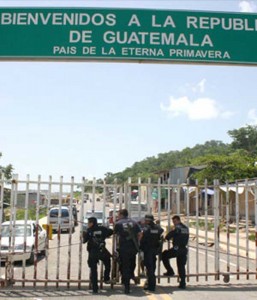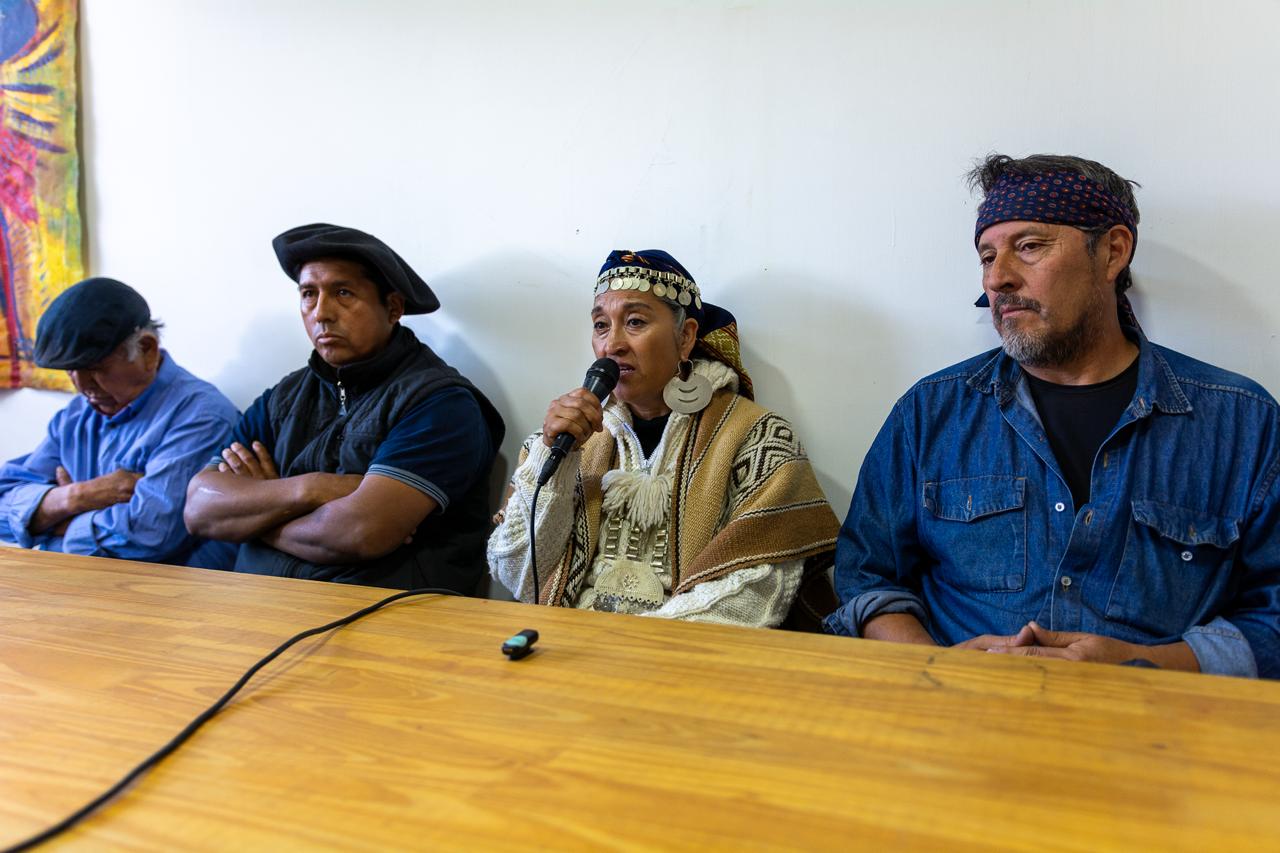 Mexico’s southern border has become the line of contention of the most powerful country in the world. The victims of this extraterritorial policy are Central American migrants who cross every day, seeking to save their lives and their families from the violence and hunger plaguing their countries.
Mexico’s southern border has become the line of contention of the most powerful country in the world. The victims of this extraterritorial policy are Central American migrants who cross every day, seeking to save their lives and their families from the violence and hunger plaguing their countries.
For years, and especially in the past year, the U.S. government has claimed the southern border of Mexico as a strategic area for its national security. The formation of a regional trading bloc with the North American Free Trade Agreement (NAFTA) began a policy of intervention–incorrectly called integration–in Mexico that was explicitly extended to the area of security with the Security and Prosperity Partnership in 2005, and culminated in Merida Initiative in 2008.
Presented by George W. Bush as a plan of “Counterterrorism, Counternarcotics and Border Security,” the Merida Initiative, or Plan Mexico, introduced a new framework for U.S.-Mexico relations, militarized and securitized and led by the Pentagon.
The government of Barack Obama, far from reconsidering the ultra-violent impacts of the drug war strategy in Mexico, inherited the Bush plan and immediately decided to go further with it. The Obama administration extended the original three-year, multibillion-dollar Bush version “indefinitely.” It also extended the drug war in the countries of Central America, first with the Regional Security Initiative for Central America (CARSI), and now with the Partnership for Prosperity.
Mexico’s southern border was included in the plan from the outset. The original Bush Plan Mexico targeted “flows of illicit goods and persons” and lists migrant monitoring, bio-data collection, and border control expenditures, all of which have been appropriated and expanded under the Obama versions. Since the child migrant crisis of summer of 2014 and the announcement by the Peña Nieto government of Plan Frontera Sur (Southern Border), these programs began to receive more attention, and human and financial resources from both governments.
According to researchers and human rights defenders working at the southern border, the results are a tragedy for migrants. Salvador Lacruz, of the Fray Matias de Córdova Center for Human Rights in Tapachula, says that through this process of “externalization of borders” by the United States, the northern neighbor “moved its border and turned Mexico into a vertical border where border control is exercised throughout.”
Now, what has migrated–but from north to south not south to north–is the repressive model of border control. After years of witnessing the results of the infamous wall and the militarization of the northern border that has killed thousands of Mexican and Central American migrants, the U.S. model has been transferred further south–to Mexico’s border with Guatemala, with the active support of the Mexican government despite the obvious implications for national sovereignty.
The crackdown affects the states of Tabasco, Campeche and Chiapas, but above all Chiapas that has a border of 700 km with Guatemala.
Deportations Move South
After the crisis of unaccompanied children in the United States in the summer of 2014, the U.S. government pressured President Peña Nieto to stop Central American migrants in Mexico, well before they reached the U.S. border. The U.S. government sent resources, training for security forces and equipment to promote the conversion of the southern border into a trap for humans.
In Mexico, Peña Nieto announced the plan as if it were his idea in July 2014 as the Southern Border Plan. Previous administrations had begun the process of militarizing the southern border under other names, but today’s draconian measures are unprecedented. The Mexican government has sent, in addition to the army, federal, state, municipal and migration police, and some 300 (or more) members of the Gendarmerie, a new force of military police with the mission of protecting strategic economic interests.
Official figures reveal that Mexico now surpasses the United States in the deportation of Central American migrants. Deportations by the Mexican government rose more than 35% in 2014, to 107,199. So far in 2015, the Fray Matías Center reports that every month this year there have been levels of deportations at least 50% higher than the corresponding month of 2014.
An excellent study by the Human Rights Institute of Georgetown Law that focuses precisely on the conditions for migrant children, which was the pretext for this phase of militarization of the border, concludes that children and their families face long periods in detention centers that look like prisons and lack decent living conditions. In addition, there are no adequate processes for assessing asylum and refugee cases, and no procedures required by law are made to determine the best interests of children who come fleeing their countries. Nor do they take into account the goal of family reunification with parents living in the United States or Mexico.
The centers report that young people and adults are returned to situations that threaten their lives–the same situations that forced them to leave their countries.
Lacruz says that unlike the northern border where efforts are concentrated at the boundary line, U.S.-Mexico operations in southern Mexico reach far inland. The two governments are implementing a plan, partly funded by the Merida Initiative, to establish a series of checkpoints that extends up to 100 miles from the border.
This strategy promotes military / police occupation of the entire border area–an area rich in mining, agriculture, oil and water resources.
“We believe that they decided to implement this model to curb social protest, because here in Chiapas and Tabasco and Veracruz, they are planning many mega mining, oil exploration, wind turbine construction, and other projects,” says Lacruz.
“The planned megaprojects mainly affect indigenous peoples,” he says. “And they know there will be conflicts, that these people fight for their rights. ”
He added that the Alliance for Prosperity proposed by the U.S. government and the Inter-American Development Bank for the “northern triangle” countries of Guatemala, Honduras and El Salvador would extend militarization even more, but not to control smuggling. “They need the army to control the population,” he explains.
Human rights organizations as the Fray Matias de Cordova face enormous obstacles in addressing the accumulation of serious violations on the southern border. Out of 94,000 detainees in 2014, the center had contact with only about 400.
The rest, the vast majority, are women, men and children left to their fate, a destiny marked by a system that has defined them as human castoffs. It doesn’t matter what they have gone through or what they will have to go through just trying to survive. And this is the response of the governments of Obama and Peña Nieto to the “humanitarian crisis” of defenseless children last year.
Laura Carlsen is Director of the CIP Americas Program in Mexico City www.americas.org.



